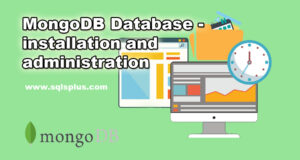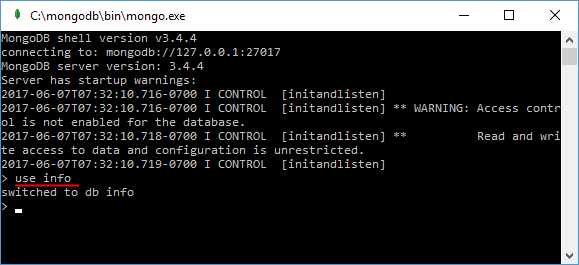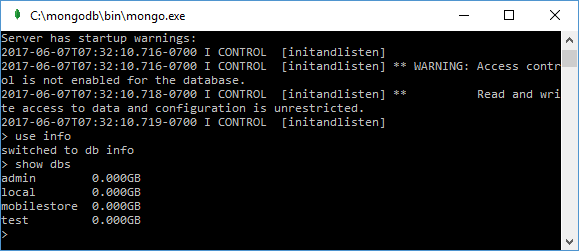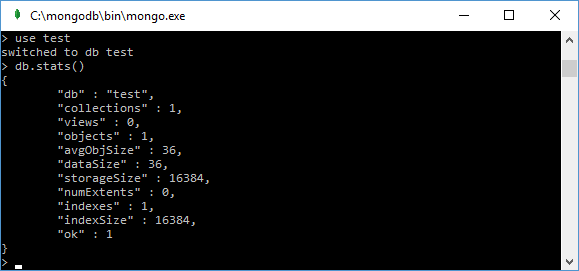REQUEST COMPLIMENTARY SQLS*PLUS LICENCE
MongoDB Database – installation and administration

When you start working with MongoDB Database, the first thing you need to do is to install the database we need as a current database in order to use it later.
To do this, use the use command followed by the database name. It does not matter whether such a database exists or not.
If it does not exist, the MongoDB shall automatically create it when adding data to it. For example, let us run mongo.exe and enter the following command there:
> use info

Now the info database will be installed as the current one.
If you are suddenly unsure whether a database with such name already exists, you can use the command show DBS to display the names of all available databases on the console:

Any name can be set for the database, but there are some limitations. For example, the name shall not contain the characters /, \, ., “, *, <, >, :, |, ?, $. In addition, database names are limited to 64 bytes.
There are also reserved names that cannot be used: local, admin, config.
And as you can see, dd info is not in this list, because I have not yet added data to it.
If we want to know which dd is currently used, we can use the db command:
db
info
In addition to databases, we can view a list of all collections in the current database using the show collections command. However, since the database, which is specified in the current database, does not exist yet, it does not contain any collections.
Getting statistics
The db.stats() command shall be used to obtain statistics for the current database. For example, we have a test database installed as the current one:

In a similar way, we can learn all the statistics for a particular collection. For example, we can find out the statistics for the users: db.users.stats() collection.
MongoDB Administration Tutorial: MongoDB Tutorial & MongoDB Administration Training
MORE NEWS
PreambleNoSql is not a replacement for SQL databases but is a valid alternative for many situations where standard SQL is not the best approach for...
PreambleMongoDB Conditional operators specify a condition to which the value of the document field shall correspond.Comparison Query Operators $eq...
5 Database management trends impacting database administrationIn the realm of database management systems, moreover half (52%) of your competitors feel...
The data type is defined as the type of data that any column or variable can store in MS SQL Server. What is the data type? When you create any table or...
PreambleMS SQL Server is a client-server architecture. MS SQL Server process starts with the client application sending a query.SQL Server accepts,...
First the basics: what is the master/slave?One database server (“master”) responds and can do anything. A lot of other database servers store copies of all...
PreambleAtom Hopper (based on Apache Abdera) for those who may not know is an open-source project sponsored by Rackspace. Today we will figure out how to...
PreambleMongoDB recently introduced its new aggregation structure. This structure provides a simpler solution for calculating aggregated values rather...
FlexibilityOne of the most advertised features of MongoDB is its flexibility. Flexibility, however, is a double-edged sword. More flexibility means more...
PreambleSQLShell is a cross-platform command-line tool for SQL, similar to psql for PostgreSQL or MySQL command-line tool for MySQL.Why use it?If you...
PreambleWriting an application on top of the framework on top of the driver on top of the database is a bit like a game on the phone: you say “insert...
PreambleOracle Coherence is a distributed cache that is functionally comparable with Memcached. In addition to the basic function of the API cache, it...
PreambleIBM pureXML, a proprietary XML database built on a relational mechanism (designed for puns) that offers both relational ( SQL / XML ) and...
What is PostgreSQL array? In PostgreSQL we can define a column as an array of valid data types. The data type can be built-in, custom or enumerated....
PreambleIf you are a Linux sysadmin or developer, there comes a time when you need to manage an Oracle database that can work in your environment.In this...
PreambleStarting with Microsoft SQL Server 2008, by default, the group of local administrators is no longer added to SQL Server administrators during the...















